 Last additions - Tatebayashi 館林市 Last additions - Tatebayashi 館林市 |

About the Yew plum pine.Jun 01, 2012
|
|
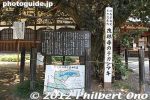
Yew plum pineJun 01, 2012
|
|
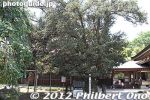
Yew plum pineJun 01, 2012
|
|
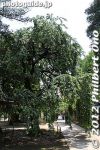
Large weeping cherry tree in front of the Hondo.Jun 01, 2012
|
|

Cemetery next to the Hondo Hall.Jun 01, 2012
|
|

War memorial for the Imperial Japanese Army's 2nd Tank Division which was annihilated at the Battle of the Philippines during World War II. 戦車第2師団工兵隊の碑Jun 01, 2012
|
|

Tanuki statues at Shukaku-do. This one was says "Welcome" in Kansai dialect, saying ""oideyasu."Jun 01, 2012
|
|

Tanuki statues at Shukaku-do.Jun 01, 2012
|
|
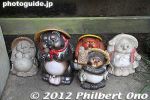
Tanuki statues at Shukaku-do.Jun 01, 2012
|
|
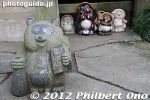
Tanuki statues at Shukaku-do.Jun 01, 2012
|
|
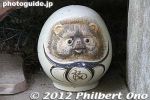
Daruma with a tanuki face.Jun 01, 2012
|
|
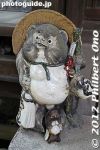
Tanuki statues at Shukaku-do.Jun 01, 2012
|
|
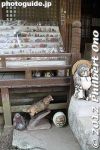
Tanuki statues at Shukaku-do.Jun 01, 2012
|
|
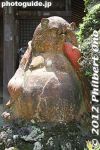
Tanuki statues at Shukaku-do.Jun 01, 2012
|
|
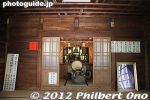
Inside Shukaku-do Hall.Jun 01, 2012
|
|
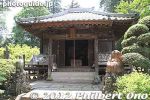
Shukaku-do Hall dedicated to the priest Shukaku-osho (守鶴和尚), a longtime priest supporter of Morinji temple and who brought the legendary chagama pot. 守鶴堂Jun 01, 2012
|
|
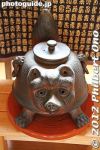
Jun 01, 2012
|
|
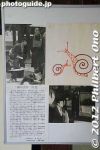
Article showing artist Yamashita Kiyoshi visiting the temple.Jun 01, 2012
|
|
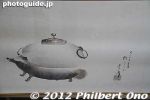
Painting of a tanuki chagama.Jun 01, 2012
|
|

A room with more scrolls and paintings of chagama.Jun 01, 2012
|
|

Temple's connection to the Bunbuku Chagama folktale.Jun 01, 2012
|
|
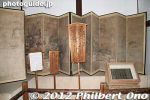
Folding screen showing the temple's connection to the Bunbuku Chagama folktale.Jun 01, 2012
|
|

About the the legendary chagama tea pot in Morinj temple, Tatebayashi, Gunma. There are other versions of the folktale.Jun 01, 2012
|
|
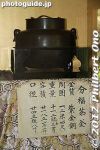
The legendary chagama tea pot in Morinj temple, Tatebayashi, Gunma.Jun 01, 2012
|
|
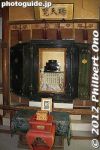
The legendary chagama tea pot in Morinj temple, Tatebayashi, Gunma.Jun 01, 2012
|
|
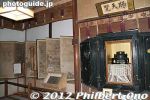
Room exhibiting the legendary chagama tea pot in Morinj temple, Tatebayashi, Gunma.Jun 01, 2012
|
|

Room exhibiting the legendary chagama tea pot in Morinj temple, Tatebayashi, Gunma.Jun 01, 2012
|
|
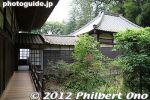
Jun 01, 2012
|
|
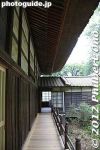
Walk along the veranda to another room exhibiting the legendary chagama tea pot.Jun 01, 2012
|
|

The rear of the Hondo hall has a nice green garden.Jun 01, 2012
|
|
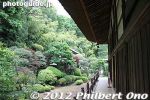
The rear of the Hondo hall has a nice green garden.Jun 01, 2012
|
|
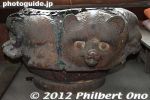
Jun 01, 2012
|
|
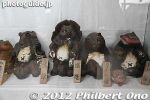
Old Tanuki statues at Morinji temple,Jun 01, 2012
|
|
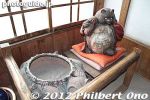
Tanuki hibachiJun 01, 2012
|
|
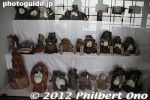
Tanuki statues in the showcase looked very old.Jun 01, 2012
|
|

Tanuki sculpturesJun 01, 2012
|
|

Then there's a showroom of many tanuki sculptures, both wooden and stuffed.Jun 01, 2012
|
|
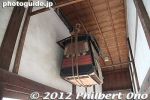
A palanquin exhibited near the ceiling.Jun 01, 2012
|
|
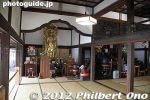
Morinji's Hondo hall also has statues of the temple founder Chief Priest Dairin Shotsu-Osho (大林正通大和尚) and longtime assistant Priest Shukaku-Osho (守鶴和尚).Jun 01, 2012
|
|
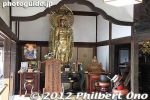
A side altar inside the Hondo hall.Jun 01, 2012
|
|
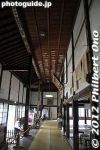
Inside Hondo hall.Jun 01, 2012
|
|
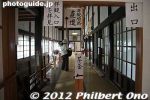
Pay a small admission fee to enter the Hondo from the right side. You can walk around inside the Hondo hall and see the altars.Jun 01, 2012
|
|
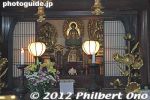
Morinji temple's Buddhist altar inside the Hondo Hall. The Shakanyorai (釈迦如来) or Gautama Buddha is worshipped. 本堂Jun 01, 2012
|
|
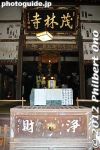
Morinji temple's offertory box and altar inside.Jun 01, 2012
|
|
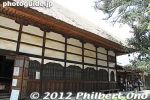
Morinji temple's Hondo main hall can be entered through the reception window on the right. 300 yen admission charged (150 yen for kids). Open 9 am-4 pm. Closed Thu.Jun 01, 2012
|
|
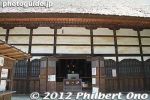
Morinji temple's Hondo main hall was originally built in 1468 and repaired in 1727. 本堂Jun 01, 2012
|
|
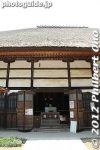
Morinji temple's Hondo main hall. 本堂Jun 01, 2012
|
|
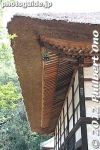
The Hondo Hall has a thatched-roof.Jun 01, 2012
|
|
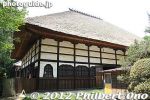
Morinji temple's Hondo main hall. 本堂Jun 01, 2012
|
|
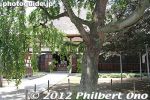
A large weeping cherry tree hides the Hondo main hall.Jun 01, 2012
|
|

Jun 01, 2012
|
|
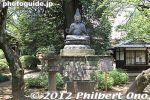
Jun 01, 2012
|
|
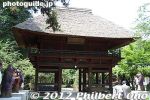
Sanmon Gate at Morinji temple. The Sanmon Gate is usually called the Akamon Gate 山門(通称赤門). The largest and most distinguished-looking gate.Jun 01, 2012
|
|
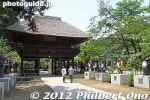
Sanmon Gate at Morinji temple. 山門Jun 01, 2012
|
|
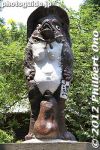
A giant Tanuki raccoon dog statue at Morinji temple at Tatebayashi, Gunma Prefecture. Donated by Tobu Railway in 1960.Jun 01, 2012
|
|
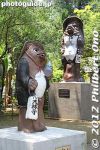
Jun 01, 2012
|
|
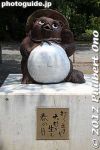
Jun 01, 2012
|
|

Tanuki raccoon dog statue at Morinji temple at Tatebayashi, Gunma Prefecture.Jun 01, 2012
|
|
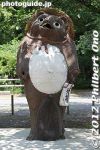
8. A thick tail for reliability and stability no matter what.Jun 01, 2012
|
|
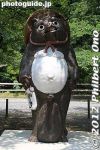
7. Large gonads between the legs which is the money bag for prosperity...Jun 01, 2012
|
|
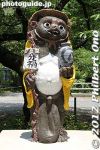
6. An unpaid bill in the left hand symbolizes trust...Jun 01, 2012
|
|
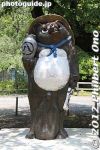
5. A sake flask in the left hand for innate virtue...Jun 01, 2012
|
|
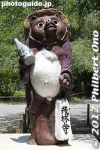
4. The large belly is for being calm as well as bold...Jun 01, 2012
|
|
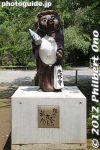
3. The large eyes is for seeing the situation and making correct and considerate decisions...Jun 01, 2012
|
|

2. The smiling face is for affability...Jun 01, 2012
|
|

Shigaraki tanuki is said to bear Eight Lucky Omens (八相縁起). 1. The hat is protection from unexpected disasters...Shigaraki tanuki is said to bear Eight Lucky Omens (八相縁起). 1. The hat is protection from unexpected disasters. 2. The smiling face is for affability, 3. The large eyes is for seeing the situation and making correct and considerate decisions, 4. The large belly is for being calm as well as bold, 5. A sake flask in the left hand for innate virtue, 6. An unpaid bill in the left hand symbolizes trust, 7. Large gonads between the legs which is the money bag for prosperity, and 8. A thick tail for reliability and stability no matter what.Jun 01, 2012
|
|

Jun 01, 2012
|
|
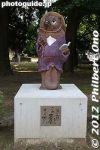
Jun 01, 2012
|
|
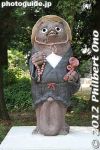
Tanuki raccoon dog statue at Morinji temple at Tatebayashi, Gunma Prefecture.Jun 01, 2012
|
|
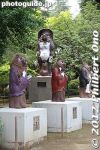
Most of these tanuki came from Shigaraki in Shiga Prefecture. Shigaraki is one of Japan's most famous pottery centers.Jun 01, 2012
|
|
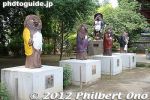
The statues recently got painted. Before, they were just bare stone statues.Jun 01, 2012
|
|
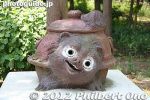
Tanuki morphed into a steel tea pot at Morinji temple, Tatebayashi, Gunma Prefecture.Jun 01, 2012
|
|
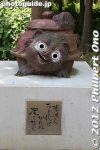
Tanuki morphed into a steel tea pot at Morinji temple, Tatebayashi, Gunma Prefecture.Jun 01, 2012
|
|
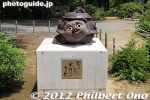
In folklore, tanuki is a mischievous shapeshifter so it is often depicted in many different costumes.Jun 01, 2012
|
|
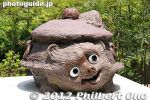
Another tanuki morphed into a steel tea pot at Morinji temple, Tatebayashi, Gunma Prefecture. Based on the Bunbuku Chagama folktale.Jun 01, 2012
|
|
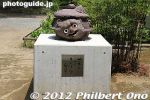
Jun 01, 2012
|
|
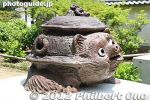
Jun 01, 2012
|
|
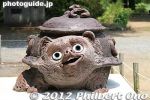
A few statues shows a tanuki morphed into a steel tea pot at Morinji temple, Tatebayashi, Gunma Prefecture. Based on the Bunbuku Chagama folktale.Jun 01, 2012
|
|
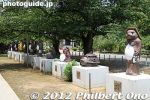
Tanuki statues on the right side of the Sando path to the Sanmon Gate.Jun 01, 2012
|
|
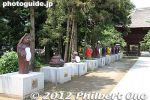
Tanuki statues on the left side of the Sando path to the Sanmon Gate.Jun 01, 2012
|
|

The Sando path (参道) from Somon Gate to Sanmon Gate (山門) is lined with 21 tanuki statues on both sides. The temple really plays up on its Bunbuku Chagama folktale fame.Jun 01, 2012
|
|

In 1426, Shotsu took Shukaku with him to Tatebayashi and built a tiny temple. In 1468, the local Aoyagi Castle lord Akai Masamitsu (赤井正光) indebted to Shotsu, donated some of his land for the temple.The 13th panel explaining the famous Bunbuku Chagama folktale.Jun 01, 2012
|
|

Map of Morinji temple. Morinji was founded by the priest Dairin Shotsu (大林正通), During a pilgrimage, Shotsu met an old priest Shukaku-osho at the foot of Ikaho in Gunma. Jun 01, 2012
|
|
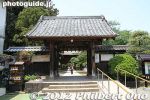
First you see this Somon Gate (総門), built in 1468 and normally called Kuromon Gate (黒門), to enter Morinji temple, one of Tatebayashi's main tourist sights.Jun 01, 2012
|
|
|
|
|
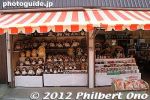
Jun 01, 2012
|
|
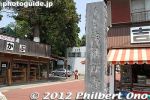
The way to Morinji temple is lined with some tourist souvenir shops.Jun 01, 2012
|
|
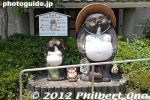
Even at the Morinji temple parking lot, tanuki statues.Jun 01, 2012
|
|

Women's restroom at the Morinji parking lot has a tanuki design.Jun 01, 2012
|
|

The first panel explaining the famous Bunbuku Chagama (分福茶釜) folktale about a tanuki raccoon dog which turned into a tea pot. Morinji temple is where the folktale originated. There are multiple versions of the story.Jun 01, 2012
|
|
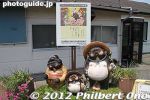
A symbol of Tatebayashi, Tanuki raccoon dogs welcome you in front of Morinji-mae Station. A hint of what's in store. A story panel starts to explain the tanuki story. Other story panels are found on the way to the temple.Jun 01, 2012
|
|

Morinji is a Soto-Zen temple famous for the Bunbuku Chagama (分福茶釜) folk tale about a tanuki raccoon dog that transformed into a steel pot used by the temple priest. Near Morinji-mae Station on the Tobu Line. One stop before Tatebayashi Station.Jun 01, 2012
|
|

Morinji-mae Station. Morinji temple is a short walk away (660 meters).Jun 01, 2012
|
|

Festivals in Tatebayashi.Jun 01, 2012
|
|

Jun 01, 2012
|
|
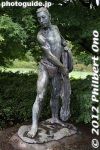
Netfishing sculpture.Jun 01, 2012
|
|
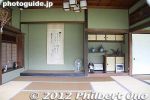
Inside Former Akimoto Villa. 旧秋元別邸Jun 01, 2012
|
|

Former Akimoto Villa built for the Akimoto clan who ruled Tatebayashi. 旧秋元別邸Jun 01, 2012
|
|

Iris garden.Jun 01, 2012
|
|

Cherry trees along Lake Jonuma shore.Jun 01, 2012
|
|

About Benzaiten ShrineJun 01, 2012
|
|
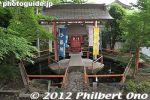
Behind the shrine is this Benzaiten Shrine in a little pond.Jun 01, 2012
|
|
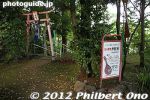
Jun 01, 2012
|
|
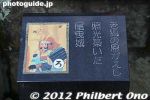
Jun 01, 2012
|
|
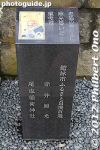
Obiki Inari Shrine is one of Tatebayashi's 100 Famous Spots.Jun 01, 2012
|
|
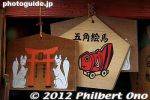
Jun 01, 2012
|
|
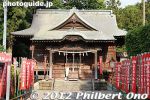
Obiki Inari Shrine. 尾曳稲荷神社Jun 01, 2012
|
|
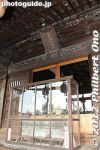
Jun 01, 2012
|
|

Jun 01, 2012
|
|
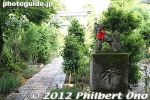
Jun 01, 2012
|
|
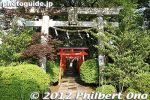
Nearby is Obiki Inari Shrine. 尾曳稲荷神社Jun 01, 2012
|
|
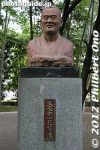
Bust of novelist Tayama Katai.Jun 01, 2012
|
|

Boyhood home of novelist Tayama Katai, former samurai house.Jun 01, 2012
|
|
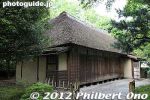
Boyhood home of novelist Tayama Katai (田山 花袋 1872-1930). Lived in this house from age 6-14. Free admission. Closed Mon.Jun 01, 2012
|
|

This area was part of Tatebayashi Castle.Jun 01, 2012
|
|
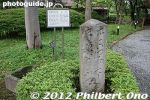
Old road marker.Jun 01, 2012
|
|

About the stones from Tatebayashi Castle.Jun 01, 2012
|
|

Stones from Tatebayashi Castle.Jun 01, 2012
|
|

About former Jomo Muslin Office's telegram office.Jun 01, 2012
|
|
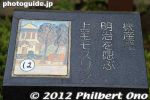
Former Jomo Muslin Office is one of Tatebayashi's 100 Famous Spots.Jun 01, 2012
|
|

About former Jomo Muslin Company Office.Jun 01, 2012
|
|
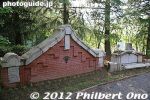
Remains of former Jomo Muslin Office's telegram office.Jun 01, 2012
|
|
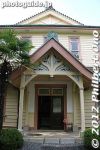
Entrance to former Jomo Muslin Company Office Closed Mon.Jun 01, 2012
|
|

Former Jomo Muslin Company Office built in 1910. The company was a textile maker. Later went bankrupt. The building was donated to the city. Closed Mon.Jun 01, 2012
|
|

Tayama Katai Memorial Museum of Literature. Tayama (田山 花袋 1872–1930) was a novelist from Tatebayashi. Closed Mon.Jun 01, 2012
|
|

Across the street are historic buildings. Free admission.Jun 01, 2012
|
|

Tatebayashi's most famous citizen is Mukai Chiaki, Japan's first woman astronaut. She flew on the Space Shuttle in 1994 and 1998.Jun 01, 2012
|
|
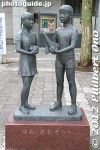
Statue in front of Chiaki Mukai Children's Science Museum, Tatebayashi, Gunma. The boy holds a space shuttle.Jun 01, 2012
|
|
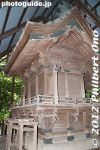
Jun 01, 2012
|
|

Chiaki Mukai Children's Science Museum has a planetarium and space-related exhibits. Closed Mon.Jun 01, 2012
|
|
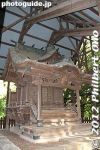
Hachiman Shrine on Tatebayashi Castle's Honmaru. Gunma.Jun 01, 2012
|
|
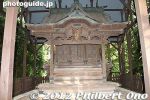
Hachiman Shrine on Tatebayashi Castle's Honmaru.Jun 01, 2012
|
|
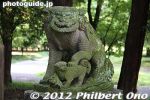
Most of the former castle grounds are now occupied by the Tatebayashi City Hall and other public facilities.Jun 01, 2012
|
|
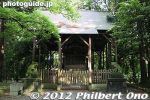
Hachiman Shrine on Tatebayashi Castle's Honmaru. The shrine has a protective housing. Hachiman was the patron god of Tatebayashi Castle, Gunma.Jun 01, 2012
|
|

About Tatebayashi Castle's Honmaru.Jun 01, 2012
|
|
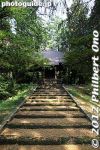
Hachiman Shrine on Tatebayashi Castle's Honmaru, Gunma.Jun 01, 2012
|
|
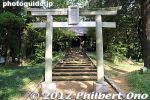
Tatebayashi Castle's Honmaru is marked by this Hachiman Shrine on a mound. Gunma.Jun 01, 2012
|
|
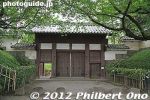
Other side of Tatebayashi Castle's Dobashi Gate. 土橋門Jun 01, 2012
|
|
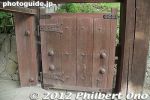
Door in Tatebayashi Castle's Dobashi Gate. 土橋門Jun 01, 2012
|
|
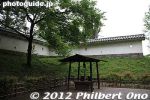
Short castle wall at Tatebayashi Castle's Dobashi Gate. 土橋門Jun 01, 2012
|
|

Tatebayashi Castle's Dobashi Gate was at the Sannomaru keep. 土橋門Jun 01, 2012
|
|
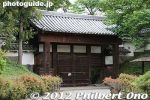
Tatebayashi Castle's Dobashi Gate. 土橋門Jun 01, 2012
|
|
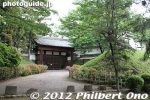
Tatebayashi Castle's Dobashi Gate is in the former Sannomaru keep of the castle. 土橋門Jun 01, 2012
|
|
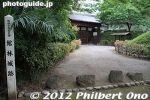
Tatebayashi was a castle town, but almost nothing remains of the castle. This Dobashi Gate was rebuilt in 1983.Jun 01, 2012
|
|

Lake JonumaJun 01, 2012
|
|

Sights in Jonuma area, dominated by Lake Jonuma.Jun 01, 2012
|
|

"Pon-chan" goods sold at tourist information office in front of Tatebayashi Station.Jun 01, 2012
|
|
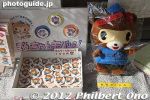
City mascot "Pon-chan" goods sold at tourist information office in front of Tatebayashi Station. "Pon" refers to the character's pot belly.Jun 01, 2012
|
|
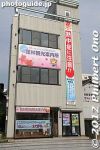
Tourist information office in front of Tatebayashi Station.Jun 01, 2012
|
|

Flower fountain in front of Tatebayashi Station.Jun 01, 2012
|
|

Flower fountain in front of Tatebayashi Station.Jun 01, 2012
|
|
|
|
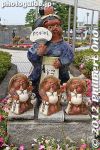
Tanuki raccoon dogs in front of Tatebayashi Station.Jun 01, 2012
|
|

Tatebayashi Station on the Tobu Isesaki Line (connects to Hanzomon subway line in Tokyo), east side. Takes almost 90 min. from central Tokyo by regular train. Costs only about 1100 yen.Jun 01, 2012
|
|
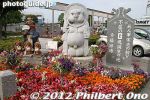
Tanuki raccoon dog in front of Tatebayashi Station, east side.Jun 01, 2012
|
|
|
|